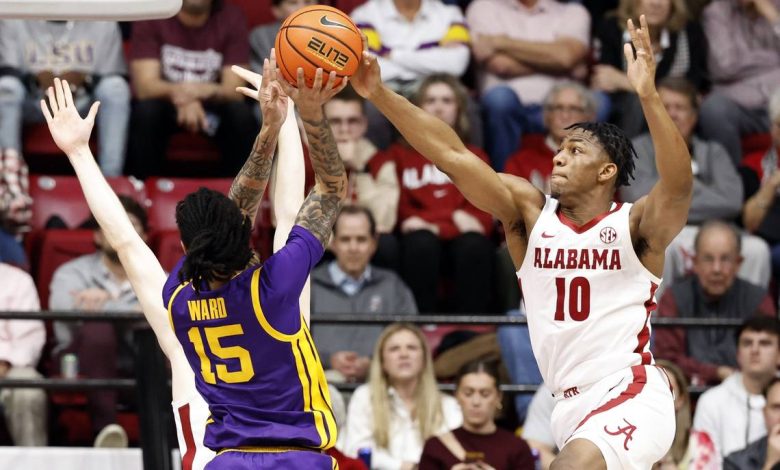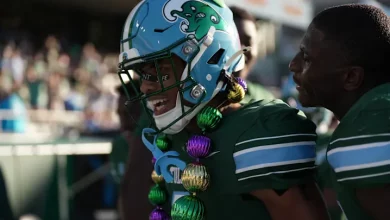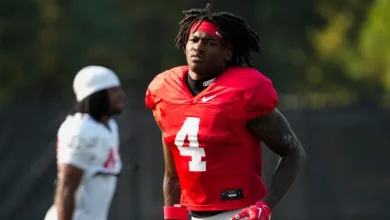Adding transfers has enhanced Mark Pope’s second UK basketball team by boosting its defensive potential.

In college basketball, the transfer portal has revolutionized team building, offering programs unprecedented flexibility to reshape rosters mid-season and between seasons. Kentucky, one of the most storied programs in NCAA history, has increasingly utilized transfers to bolster its squad. Under head coach Mark Pope, who took charge of Kentucky’s second team, the focus has shifted toward maximizing defensive potential, leveraging transfer additions as a critical component. This strategic approach underscores the importance of defense in contemporary college basketball, where talent acquisition through transfer portals provides a unique opportunity to address specific team needs quickly. This essay explores how transfer portal additions have enhanced Mark Pope’s second UK basketball team, emphasizing the defensive upside and the broader implications for Kentucky’s competitive trajectory.
—
**The College Basketball Transfer Portal: A Game-Changer**
The NCAA transfer portal has fundamentally changed how college basketball teams assemble and rebuild. Traditionally, teams relied heavily on high school recruiting and walk-ons, but the transfer portal now allows programs to bring in experienced players who can immediately impact in new environments. The proliferation of transfer eligibility rules, including the one-time transfer exemption, has made it easier for players to switch schools without penalty, leading to an influx of talented athletes seeking new opportunities.
For Kentucky, a program renowned for its recruiting prowess and player development, the transfer portal has become an essential tool. It enables the Wildcats to fill specific skill gaps, add veteran leadership, and, crucially, bolster defensive capabilities—an area that often determines success in the postseason.
—
**Mark Pope’s Coaching Philosophy and Emphasis on Defense**
Mark Pope’s coaching philosophy emphasizes a balanced approach—prioritizing toughness, effort, and defensive intensity. Although Pope’s tenure at Kentucky is relatively recent and perhaps not as long as other legendary coaches, his coaching style underscores the importance of a stifling defense as a foundation for winning basketball.
Defense is not merely about individual effort; it’s about team cohesion, communication, and strategic execution. Pope advocates for disciplined rotations, aggressive ball pressure, and versatile defensive schemes that adapt to opponents’ strengths. This philosophy aligns with the modern college game, where elite defenses often translate into victories against highly talented teams.
By leveraging transfer additions, Pope has been able to infuse the roster with players who embody these defensive principles—players who can switch, hedge screens, contest shots, and force turnovers. These transfers bring immediate defensive upside, allowing Kentucky to implement more sophisticated schemes and elevate overall team performance.
—
**Impact of Transfer Additions on Kentucky’s Defensive Upside**
The primary benefit of transfer portal additions lies in their immediate impact. Unlike freshmen, transfers often arrive with college experience, understanding of the game, and a higher basketball IQ, enabling them to contribute defensively from day one.
**1. Filling Defensive Gaps**
Kentucky’s roster, prior to transfer additions, may have had vulnerabilities—be it size, athleticism, or defensive awareness—that limit team effectiveness. Transfers can address these gaps directly. For example, a transfer with proven shot-blocking ability can anchor the interior defense, while a perimeter defender with quick hands can disrupt opponents’ ball movement.
**2. Versatility and Defensive Flexibility**
Transfers often possess versatile defensive skills, allowing coaches to implement multiple schemes—man-to-man, zone, or hybrid defenses—creating unpredictability for opponents. This flexibility enhances Kentucky’s ability to adapt to different opponents and situations, making the team more formidable defensively.
**3. Leadership and Defensive Intensity**
Experienced transfers bring leadership qualities, setting the tone defensively. Their familiarity with college basketball and high-pressure situations can elevate team intensity, communication, and effort—elements crucial for a stout defense.
**4. Depth and Defensive Endurance**
Adding transfers increases roster depth, reducing fatigue and allowing for aggressive, high-pressure defenses throughout the game. Depth also permits coaches to rotate players effectively, maintaining defensive intensity and minimizing lapses.
—
**Key Transfer Players and Their Defensive Contributions**
While specific transfer names depend on the current roster, typical examples include players with established defensive reputations:
**a. Defensive Anchors**
A transfer center or forward with shot-blocking prowess can protect the rim, alter opponents’ shot selection, and provide rim protection. For instance, a transfer with a reputation for averaging multiple blocks per game immediately raises the team’s defensive ceiling.
**b. Steal Artists**
Transfers known for active hands and quick feet can generate turnovers, leading to fast-break opportunities. Their aggressive perimeter defense can disrupt opponents’ offensive rhythm.
**c. Versatile Defenders**
Players capable of guarding multiple positions offer strategic flexibility. They can switch screens, hedge ball screens effectively, and guard smaller or larger opponents as needed.
**d. Leadership and Communication**
Veteran transfers who have played significant minutes elsewhere can organize the defense, communicate rotations, and maintain discipline on the court—critical factors in executing complex defensive schemes.
—
**Strategic Importance of Defense in Kentucky’s Success**
In college basketball, especially in high-stakes tournaments, defense often determines outcomes more than offense. Kentucky’s tradition of disciplined, aggressive defense aligns with NCAA championship-winning teams. The acquisition of transfers that enhance defensive upside aligns with this ethos, reinforcing Kentucky’s identity as a team that can lock down opponents and control game tempo.
Furthermore, a strong defense complements Kentucky’s offensive strengths, such as transition scoring and outside shooting. By forcing turnovers and contested shots, Kentucky can generate easy points and set the tone early, gaining a psychological edge.
—
**Synergy Between Defense and Team Chemistry**
Transfers arriving with prior college experience often understand the importance of team defense, fostering a culture of effort and accountability. Their familiarity with NCAA-level competition helps accelerate the team’s defensive cohesion, reducing the learning curve and enabling faster integration.
Moreover, veteran transfers can serve as mentors for younger players, instilling defensive discipline and work ethic—an intangible yet critical element for sustained success.
—
**Challenges and Considerations**
While transfers bring numerous benefits, integrating them into a cohesive defensive unit is not without challenges:
**a. Compatibility and Chemistry**
Ensuring transfer players mesh well with existing team dynamics is essential. Defensive schemes require trust, communication, and understanding among players—attributes that develop over time.
**b. System Adaptation**
Transfers must adapt to Kentucky’s defensive schemes, which may differ from their prior teams. Coaching staff must tailor training to maximize their strengths and fit within the team’s philosophy.
**c. NCAA Regulations and Eligibility**
Transfer rules and eligibility can sometimes delay contributions, affecting team continuity. However, recent rule changes favor faster integration, increasing the impact of transfers.
—
**Broader Implications for Kentucky’s Future**
The strategic deployment of transfer portal additions to improve defensive upside signifies Kentucky’s commitment to competitive excellence. It reflects an understanding that roster flexibility and experience are vital components of success in modern college basketball.
This approach also signals a shift from relying solely on high school recruiting to a more nuanced roster management strategy, blending youth and experience to build a resilient, defensively stout team.
**Potential for Postseason Success**
A team with enhanced defensive capabilities via transfers is better equipped to navigate the pressures of NCAA tournament play. Elite defenses often neutralize high-powered offenses, giving Kentucky a better shot at deep tournament runs.
**Recruiting and Program Prestige**
Success achieved through transfers can bolster Kentucky’s reputation as a destination for experienced, talented players seeking immediate impact. This can create a virtuous cycle, attracting more high-caliber transfers in future seasons.
The infusion of transfer portal additions has significantly enhanced Mark Pope’s second Kentucky basketball team’s defensive upside. By bringing in experienced, versatile players capable of anchoring and energizing the defense, Kentucky has positioned itself as a formidable force capable of competing at the highest levels. These transfers contribute not only individual talent but also foster a culture of toughness, discipline, and cohesion essential for success. Moving forward, Kentucky’s strategic use of transfers—particularly to bolster defense—will continue to be a critical factor in its pursuit of NCAA championships and sustained excellence. This evolution exemplifies how modern college basketball leverages transfer portals to adapt, compete, and thrive amid the dynamic landscape of the sport.









